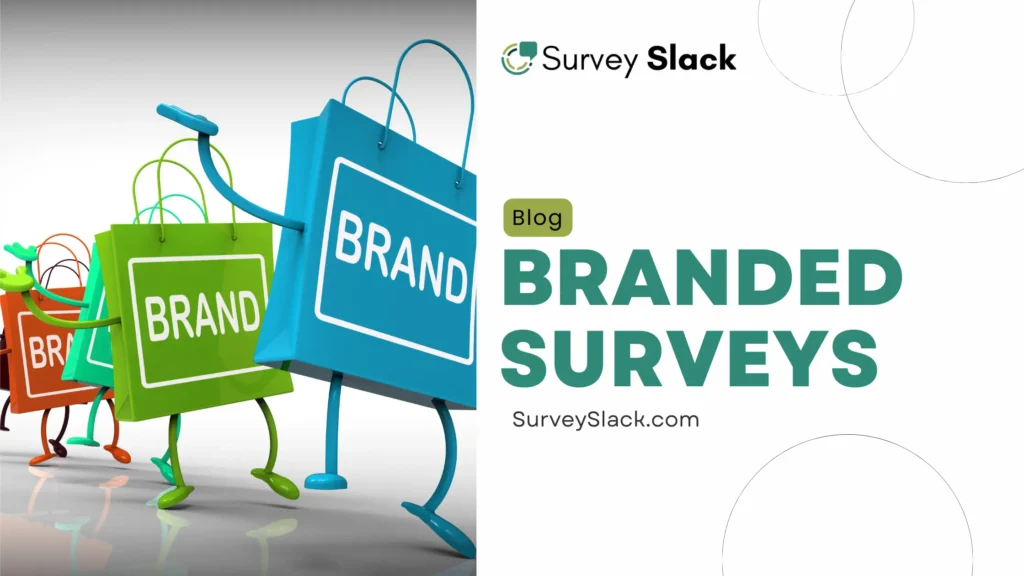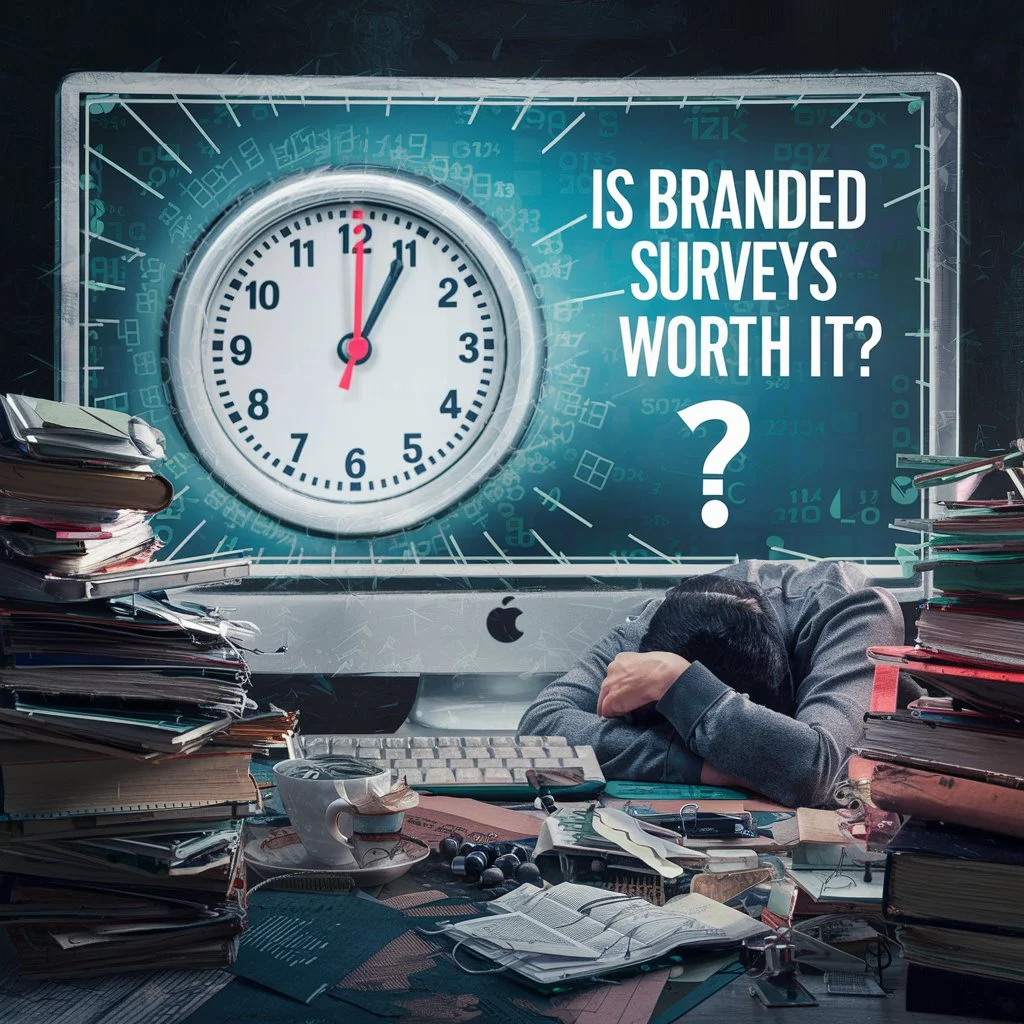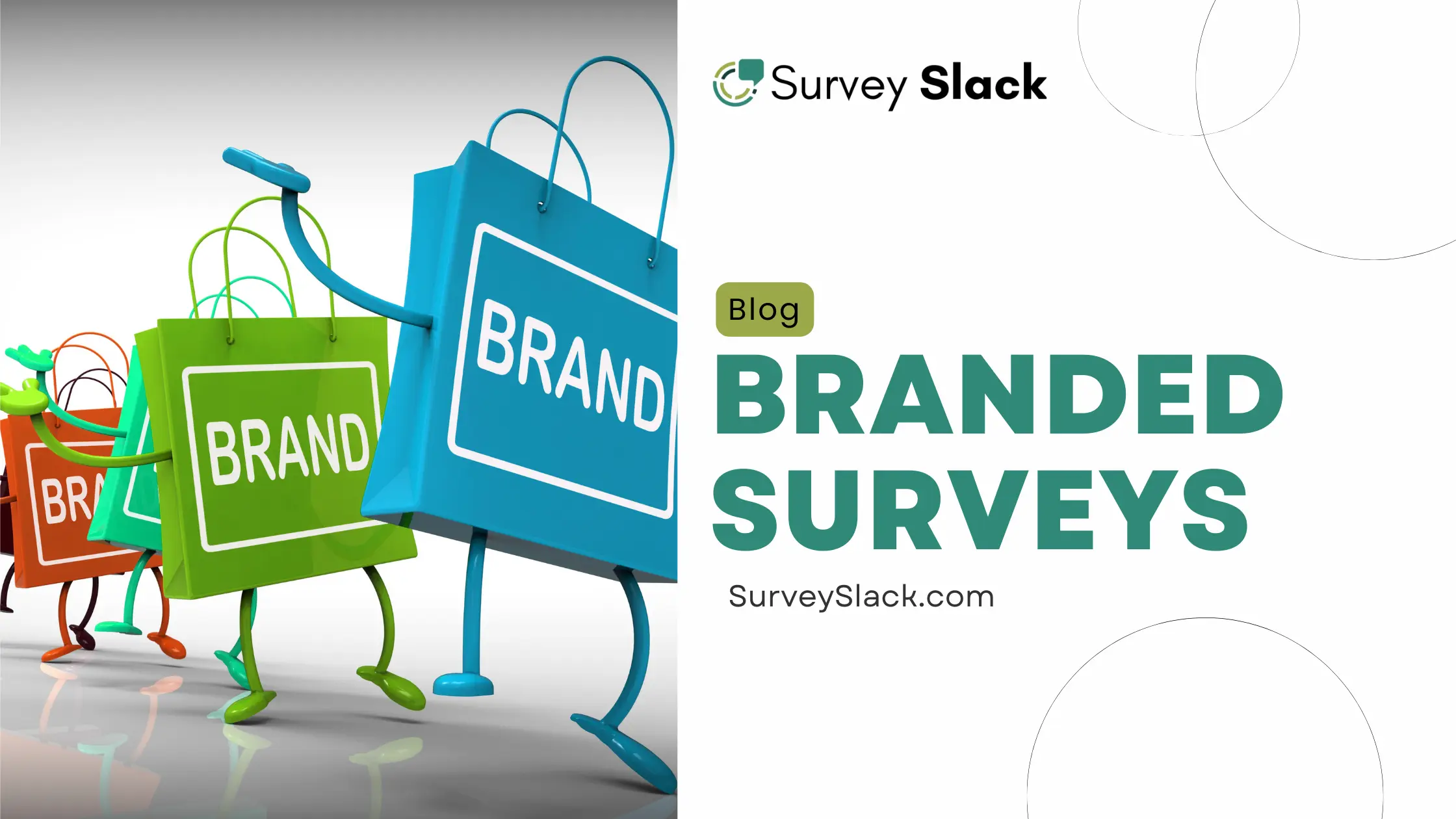The Ultimate Guide to Branded Surveys: What You Need to Know

This comprehensive guide on branded surveys in market research and consumer feedback offers insights into their significance, benefits, and best practices.
Brand surveys go beyond traditional questionnaires, incorporating a company’s unique identity and messaging. The guide is also designed for marketers, business owners, and those interested in market research.
It aims to help readers craft surveys that resonate with their target audience and turn insights into actionable strategies.
Confused by Customer Needs
Uncover hidden insights with powerful surveys
Table of Contents:
- Why are Branded Surveys Important for Businesses
- What Type of Information Do You Need to Gather From Your Audience
- How Does Branded Surveys Work
- How to Create Branded Surveys
- What are the Branded Surveys Problems
- Is Branded Surveys Worth It
Why are Branded Surveys Important for Businesses?
The Branded survey with brand awareness plays a crucial role in helping businesses gather valuable insights and make informed decisions. The importance of businesses can be attributed to several key factors:

1. Brand Engagement and Recognition:
- To reinforce a company’s identity and help in building brand recognition. When respondents see a survey with a familiar and trusted brand, they are more likely to participate. This engagement can strengthen the connection between the brand and its audience.
2. Trust and Credibility:
- Here well-known brands are often perceived as more trustworthy and credible by respondents. The credibility of the brand can positively influence the perception of the survey’s legitimacy, leading to more honest and reliable responses.
3. Customer Loyalty:
- Engaging customers demonstrates a commitment to understanding their needs and preferences. This focus on customer feedback can enhance loyalty, as customers appreciate when their opinions are valued and considered in shaping products, services, or overall business strategies.
4. Market Research and Competitive Advantage:
- Branded surveys are effective tools for conducting market research. They help businesses gain insights into market trends, customer behavior, and competitive landscapes. This information is invaluable for making strategic decisions, staying ahead of competitors, and adapting to changes in the market.
5. Product and Service Improvement:
- Surveys provide businesses with direct feedback from customers, enabling them to identify areas for improvement in products or services. By addressing customer concerns and preferences, businesses can enhance the quality of their offerings, leading to increased satisfaction and loyalty.
6. Targeted Audience Engagement:
- Hence allows businesses to tailor questions and content to their specific audience. This targeted approach ensures that the data collected is relevant and actionable. By understanding the unique needs of their customer base, businesses can refine their strategies for better results.
7. Brand Innovation:
- A source of innovative ideas and insights. By involving customers in the innovation process, businesses can gather suggestions and feedback that may lead to the development of new products or services, ultimately contributing to the growth and evolution of the brand with its brand awareness.
8. Marketing and Communication Strategy:
- Surveys provide an opportunity for brands to communicate directly with their audience. This interaction can be leveraged for marketing purposes, as businesses can share survey results, highlight customer testimonials, and showcase their commitment to customer satisfaction, thereby reinforcing their brand message.
Also, Read:
What Type of Information Do You Need to Gather From Your Audience?
The branded survey focuses on understanding your audience is crucial for any survey, regardless of the brand. Here’s what kind of information you typically need to gather from your audience:

1. Demographics:
- Age
- Gender
- Location (city, state, country)
- Income level
- Education level
- Occupation
2. Psychographics:
- Interests
- Hobbies
- Values
- Lifestyle
- Personality traits
3. Behavioral:
- Past experiences with your brand or similar products/services
- Purchase history
- Usage habits
- Media consumption habits
4. Attitudinal:
- Opinions and beliefs about your brand, industry, or relevant topics
- Perceptions of your brand’s strengths and weaknesses
- Sentiments toward your brand and its competitors
5. Needs and expectations:
- What are their pain points or challenges?
- What are their goals and aspirations?
- What do they expect from your brand or product/service?
Gathering this information allows you to:
- Target the right audience: Tailor your survey questions to resonate with specific demographics and interests.
- Craft effective questions: Use language and examples that are relevant to your audience’s understanding.
- Boost response rates: People are more likely to participate in surveys that are relevant and appealing to them.
- Gain deeper insights: Analyze the data in the context of your audience’s characteristics to uncover valuable trends and patterns.
Also, Read:
How Does Branded Surveys Work?
It acts as a bridge connecting you, the participant, with market research companies seeking valuable insights. Here’s a breakdown of the process:

Registration:
- Typically, users need to register on the Branded Surveys website. This involves creating an account by providing basic information such as name, email address, and demographic details.
Profile Completion:
- Users may be required to complete a profile survey to provide additional information about themselves. This helps in matching relevant users based on their demographics.
Survey Opportunities:
- After completing the registration and profile setup, users are presented with a list of available surveys. These can cover a wide range of topics and may come from various companies or organizations looking for consumer opinions.
Earning Points:
- Instead of direct cash payments, many survey platforms, including Branded Surveys, often reward users with points for completing. The number of points earned may vary depending on the length and complexity of the survey.
Redeeming Points:
- Accumulated points can usually be redeemed for rewards such as gift cards, UPI or PayPal cash, or other merchandise. Each platform may have its own set of reward options and redemption thresholds.
Referral Programs:
- Some survey platforms have referral programs where users can earn additional points by referring friends and family to the platform.
Payment Process:
- Once a user reaches the minimum redemption threshold, they can initiate the payout process. Payments or rewards are typically processed within a specified timeframe.
Privacy and Security:
- Reputable survey platforms prioritize user privacy and ensure that the information provided is handled securely. They often have strict data protection policies in place.
Community and Support:
- Some survey platforms create a sense of community among users, allowing them to share experiences and tips. Additionally, customer support is available to assist users with any issues they may encounter.
Also, Read:
How to Create Branded Surveys?
Creating branded surveys is a crucial aspect of obtaining valuable feedback from your audience while maintaining a professional and consistent brand image. Here’s a step-by-step on how to create branded surveys:

1. Define Your Goals and Audience:
- Identify your objectives: What information do you seek? Customer satisfaction, product feedback, or brand perception?
- Know your audience: Tailor the survey language and format to resonate with their demographics and preferences.
2. Embrace Your Brand Identity:
- Visuals: Integrate your logo, color scheme, and fonts seamlessly throughout the survey.
- Messaging: Maintain a consistent brand voice in all questions, instructions, and thank you messages.
3. Leverage Survey Creation Tools:
- Explore online platforms: Many survey tools offer branding features, allowing customization of colors, logos, and themes.
- Consider professional design: For complex surveys or a distinctive look, consider collaborating with a designer.
4. Optimize for User Experience:
- Mobile-friendliness: Ensure your survey renders flawlessly on all devices, especially smartphones.
- Clarity and conciseness: Keep questions clear, and concise, and avoid jargon or overly technical language.
- Progress indicator: Include a progress bar to motivate respondents and improve completion rates.
5. Promote and Distribute Effectively:
- Targeted channels: Utilize appropriate channels to reach your target audience, such as email campaigns or social media posts.
- Clear call to action: Include a compelling call to action, urging participation in the survey.
6. Analyze and Act on Insights:
- Data analysis: Extract valuable insights from the collected data and use them to inform strategic decisions.
- Communicate results: Share key findings with your audience, demonstrating your commitment to their feedback.
Also, Read:
What are the Branded Surveys Problems?
While they offer a platform to earn rewards through surveys, it’s important to be aware of its potential downsides:

1. Technical Glitches: Users may encounter technical issues such as website errors, survey pages not loading correctly, or problems submitting responses. These issues can be frustrating and might affect the overall user experience.
2. Payment Delays or Issues: Some users may face delays in receiving payments or encounter problems with the redemption of rewards. Survey platforms need to have a reliable and efficient payment system to maintain user trust.
3. Time commitment: Surveys can be time-consuming, and some may take longer than initially indicated. This can be frustrating if you’re expecting quick rewards.
4. Disqualification: After starting a survey, you might be disqualified based on your demographics or answer choices. This can be a waste of time and effort.
5. Limited Survey Opportunities: Users may express dissatisfaction if there is a lack of availability or if they don’t qualify for a significant portion of the surveys they attempt. A shortage of survey opportunities can impact the overall earning potential for users.
6. Account Suspension or Termination: Users might face issues such as account suspension or termination, often due to violation of terms of service or suspected fraudulent activity. Clear communication about rule violations is crucial to prevent misunderstandings.
7. Privacy Concerns: Participants in online surveys may have concerns about the privacy and security of their personal information. Ensuring robust data protection measures and transparent privacy policies is essential for maintaining user confidence.
It’s crucial to weigh these potential drawbacks against the benefits of using it to make an informed decision about whether it aligns with your expectations and goals.
Is Branded Surveys Worth It?
Whether a Brand Survey is good for you depends on your priorities and expectations. Here’s a breakdown of its pros and cons to help you decide:

Pros:
- Legitimate and reliable: Branded Surveys is a well-established platform with a positive reputation.
- Variety of surveys: They offer a good range on various topics, increasing your chances of finding ones you qualify for.
- Multiple reward options: You can redeem your points for cash, gift cards, or donations.
- User-friendly interface: The platform is easy to navigate and use.
Cons:
- Low earning potential: While you can earn some extra money, don’t expect it to be a significant source of income.
- Disqualification: You might go through screening questions for a survey and then get disqualified, wasting your time.
- Time commitment: Completing it can be time-consuming, especially compared to the potential rewards.
Stop Wasting Time! Write Surveys Faster
AI creates targeted questions for better data
Conclusion:
Branded surveys are valuable for businesses to engage with their audience, gather insights, and achieve marketing goals.
By understanding the types of information collected and following the steps for creating and implementing surveys, companies can improve brand awareness, loyalty, and product development, outweighing potential costs and traditional survey fatigue.
The drawbacks of making a worthwhile investment for businesses seeking to strengthen their customer relationships and brand strategy.
Frequently asked question(FAQs):
What are the benefits of using branded surveys?
Branded surveys offer valuable insights into your target audience, leading to improved brand awareness, customer loyalty, and product development.
What types of information can I gather from branded surveys?
Gather information like demographics, purchasing habits, and brand perception to understand your customers and tailor your marketing strategy.
How much time does it take to create a branded survey?
The time varies depending on your goals and complexity. Leverage survey creation tools for efficient design and distribution.
Are branded surveys expensive?
Several free and paid options exist. Consider your budget and survey needs when choosing a platform.
How can I ensure data security and privacy with branded surveys?
Choose platforms that prioritize data security with robust encryption and privacy policies. Be transparent with participants about how their information will be used.


